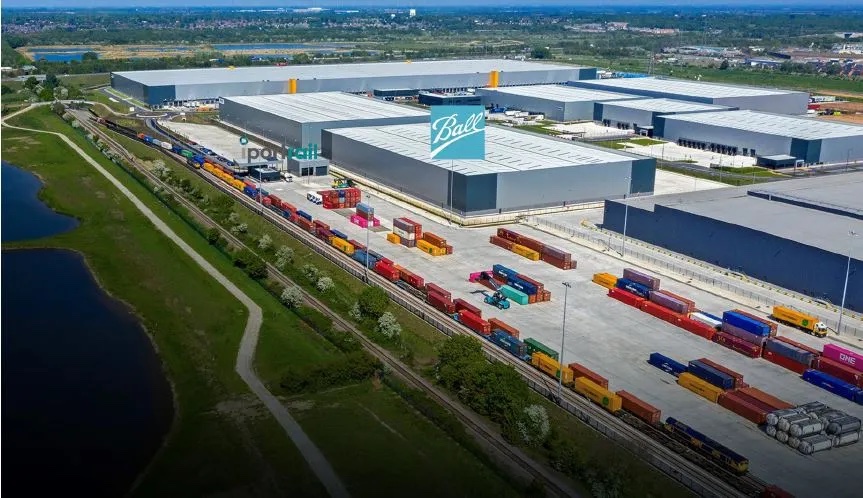New Warehouse in UK a Step Towards Reducing Emissions
February 01, 2021
Our new warehouse in the United Kingdom is a state-of the art facility built to meet the highest environmental standards. With direct access to the railroad network, it is expected to reduce Co2 emissions by more than 5,000 tonnes annually.
After gaining the ASI Performance and Chain of Custody Standard Certification last year, this is significant step in how Ball is addressing major sustainability issues in the aluminum value chain and an example of how we can make a real difference to our planet.
A railhead adjacent to the warehouse will significantly help to decrease Co2 emissions. The use of rail transport instead of truck services will cut Co2 emissions by more than 5,000 tonnes per year.
With the Ball North Warehouse, we have combined multiple warehouse sites into one single location, reduced complexity through one stock holding point and increased flexibility through providing an enhanced unloading capacity for the increased UK imports.
The location is also in the process of getting a Building Research Establishment Environmental Assessment Method (BREEAM) rating, the highest standard for sustainable construction. EMEA warehousing manager Peter Warburton explains that the warehouse is built to achieve BREEAM’s “Excellent” rating.
“We are already installing several sustainable solutions to make the most of the daylight and avoid unnecessary artificial lighting, fitting motion sensors, LED lighting and solar panels. The facility is highly insulated and has no heating system,” he says.
“When we combine the BREEAM accreditation with the rail connection, which we will use for a large increase in containerised imports into the UK, it is a step change in sustainability for Ball’s UK supply chain,” says Mark Haslam, logistics director for EMEA. “We are not only closer to our customers, but we are also able to provide a world-class logistics operation that is truly sustainable.”
This initiative gives us momentum toward accomplishing our 2030 sustainability goals – reducing our absolute carbon emissions from our own operations by 55% by 2030.
